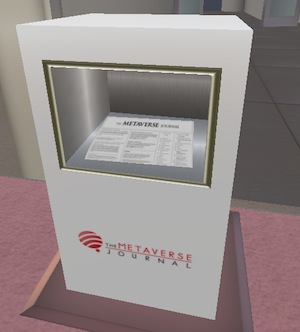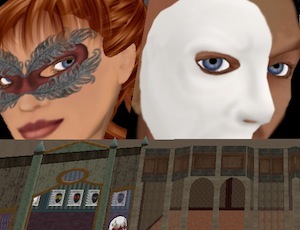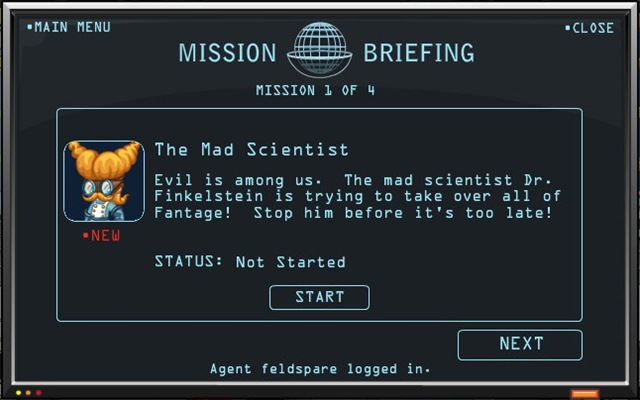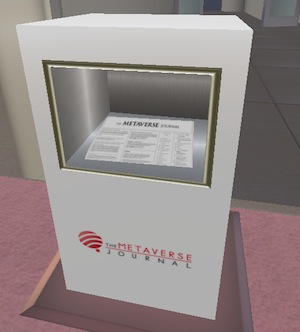 1. CNET (USA) – How ‘Avatar’ may predict the future of virtual worlds. “Since the release of his massive hit “Avatar,” director James Cameron has gotten plenty of deserved attention for his filmmaking innovations, having invented a camera system that captured live footage of his actors and integrated it immediately into fleshed-out scenes from his fictional world of Pandora. But movies may not be the only medium Cameron’s innovation is pushing toward the future. In fact, the technology he and his visual effects partners built for the record breaking film may also provide our first real glimpse of the future of 3D virtual worlds.”
1. CNET (USA) – How ‘Avatar’ may predict the future of virtual worlds. “Since the release of his massive hit “Avatar,” director James Cameron has gotten plenty of deserved attention for his filmmaking innovations, having invented a camera system that captured live footage of his actors and integrated it immediately into fleshed-out scenes from his fictional world of Pandora. But movies may not be the only medium Cameron’s innovation is pushing toward the future. In fact, the technology he and his visual effects partners built for the record breaking film may also provide our first real glimpse of the future of 3D virtual worlds.”
2. Hypergrid Business (Hong Kong) – Business virtual needs. “When most people compare virtual worlds, they do so from a technical perspective — how many concurrent users, what kind of interface is being used, what data standards are supported. Too often, however, general business requirements are overlooked. This is a pity, because from a technical perspective there are few differences between the various virtual world platforms, and the differences that do exist are likely to vanish over time as users demand these features and vendors add them to their offerings.”
3. Inc. (USA) – Should You Stake Your Claim in a Virtual World? “A basic but sturdy tenet of social media is to go where the people are. So if virtual worlds like Second Life have lost some cultural cache to the likes of Twitter, Foursquare, and Facebook what’s the point of getting involved? In short, setting up your own avatar, or even an in-world space for your company can save you money and maybe even get that eyeball play your marketing team has been gunning for. For starters, just because virtual worlds are no longer a media darling doesn’t mean they emptied out overnight. “I think it’s trending slowly but inexorably upward,” says Michael Wilson CEO of Makena Technologies, which runs the virtual world There, when asked about the number of people using virtual worlds.”
4. Computerworld (USA) – Augmented reality: Pure hype or Next Big Thing in mobile? “Augmented reality technology is getting a lot of attention these days — particularly the use of AR with smartphones. The idea is that by using certain software, you can turn your iPhone, Droid or other smartphone into a virtual heads-up display. Aim your phone’s camera at a shop, restaurant or landmark, and information about the place, such as hours of operation, reviews or directions, appears on the device’s screen as graphics floating over the image of the place. Dozens of developers of mobile augmented reality apps are banking on AR becoming the Next Big Thing in the mobile market. Indeed, a recent Juniper Research report predicted that annual revenues from mobile AR apps will reach $732 million by 2014, up from less than $1 million in 2009.”
5. Macworld (USA) – Onverse offers free-to-download social MMO. “If you thought there could be no social network more time-consuming than Facebook, you were wrong. Onverse, launched in beta last June, brings social networking into 3D, then spices it up with avatars, interior decorating, and mini games you can play against your friends. Best of all, it’s completely free for Mac users to download. Designer Steve Pierce, a Sony Online Entertainment design manager behind EverQuest II, brought Onverse to life with four other artists and engineers on a “shoe-string budgetâ€, creating a virtual world that he describes as “much more of a game environment than many of our chat-only competitors.â€
6. The Christian Science Monitor (USA) – ‘Avatar’ reality: It’s just a show, people. “In my continuing quest to remain slightly behind the times, I saw “Avatar†in 3-D several weeks after its release. Don’t worry: You won’t hear me breathlessly reporting that it is really cool. Half the planet already knows that. Nor am I going to get into its meaning or metaphysics. Yeah, I was bothered by the villainous former marines. I have marines in my family and respect them. The noble savage, white savior, and eco-worship were also a bit much, but most plays and movies are controversial if you choose to see them that way. I mean, “Mary Poppins†was about a nanny with magical powers who was blown in on the West Wind. Did anyone check her immigration status? Fairies and love potions figured prominently in “A Midsummer Night’s Dream.†Just saying.”
7. Virtual Worlds News (USA) – Facebook Credits Coming Soon To FarmVille. “Players of Zynga’s smash hit social game FarmVille will soon have the option to pay for virtual goods with Facebook Credits, according to sources close to TBI. The new payment option may debut in FarmVille as early as this week. With many other virtual worlds, including Habbo, spreading to Facebook, the roll out of Facebook Credits could present a lucrative new monetization option.”
8. News Observer (USA) – Virtual looks and feels almost real. “As Mushtaqur Rahman floated to the rafters of Duke Chapel, it was easy to forget that he was neither in a church nor off the ground. “Feeling rather angelic right now?” asked Rahman’s colleague, William Rice II, as both men peered through oversize 3-D goggles at the virtual chapel being projected above, below and all around them. Rahman and Rice are engineers with Parsons Brinkerhoff, one of the world’s largest civil engineering firms. They had come to Duke’s Pratt School of Engineering on a recent morning to experience a cube-shaped virtual reality theater called the Dive, or Duke immersive virtual environment.”
9. The Wall Street Journal (USA) – Zachary Quinto Has No Time for Tomfoolery. But For Those Who Do, There’s Star Trek Online. “With the success of World of Warcraft, videogame publishers have been looking for new virtual worlds to offer to videogame players. Next week, there’s a new option with the release of Star Trek Online. Developed by Cryptic Studios, the game will allow fans be the head of their own starship as they travel the universe and battle rival ships and seek out new civilizations. Zachary Quinto, whose role as Spock in J.J. Abrams’ “Star Trek†movie received a shout-out during this week’s iPad presentation, serves as one of the voices in the game.”
10. Computerworld (USA) – Apple iPad: Will it run Second Life? “As a Second Life enthusiast, I really want the iPad to run Second Life. There’s no reason why it shouldn’t. As my friend Wagner James Au points out on the blog New World Notes, the iPhone already has a couple of rich, text-only Second Life clients, and the iPad now has the horsepower and screen size to support Second Life graphics. Moreover, as a Second Life enthusiast I want to see more people use the service. The existing software client is a major barrier to widespread Second Life adoption: It’s hard to learn. And it only runs well on desktops or powerful notebooks, while the world is adopting smartphones instead. The iPad has the potential to solve both those problems: Touching and tilting the iPad would provide an easier interface for Second Life than mousing and keyboarding. And iPads and other tablet-netbooks are going to become very popular pretty soon, as Apple sells iPads by the millions and competitors jump in to grab some of that action.”









Recent Comments